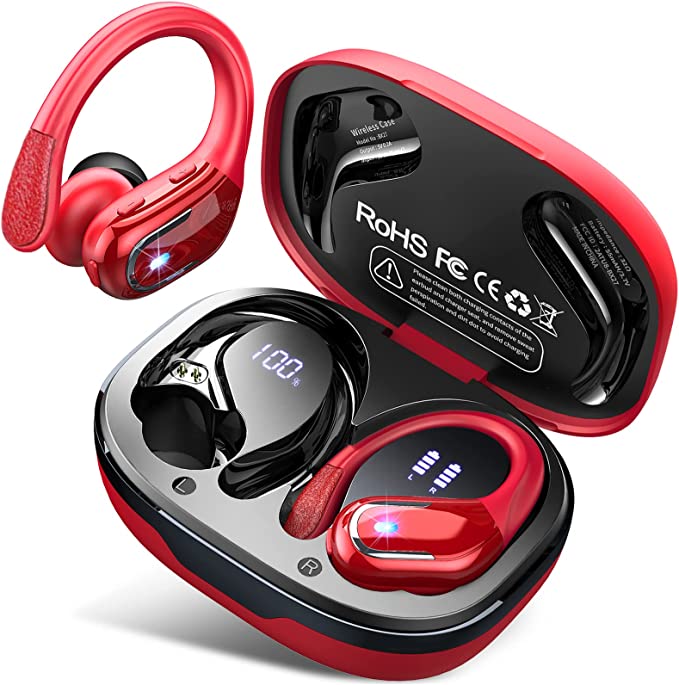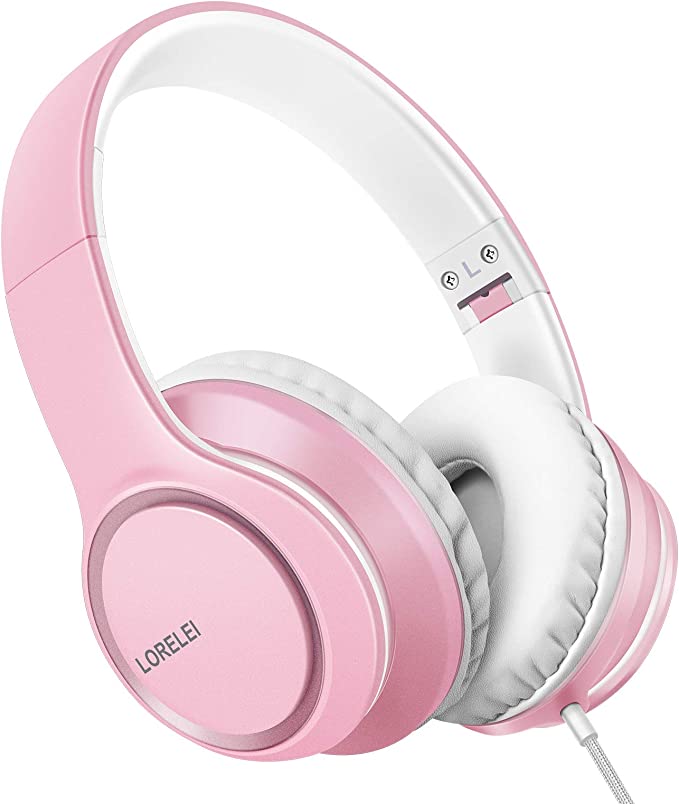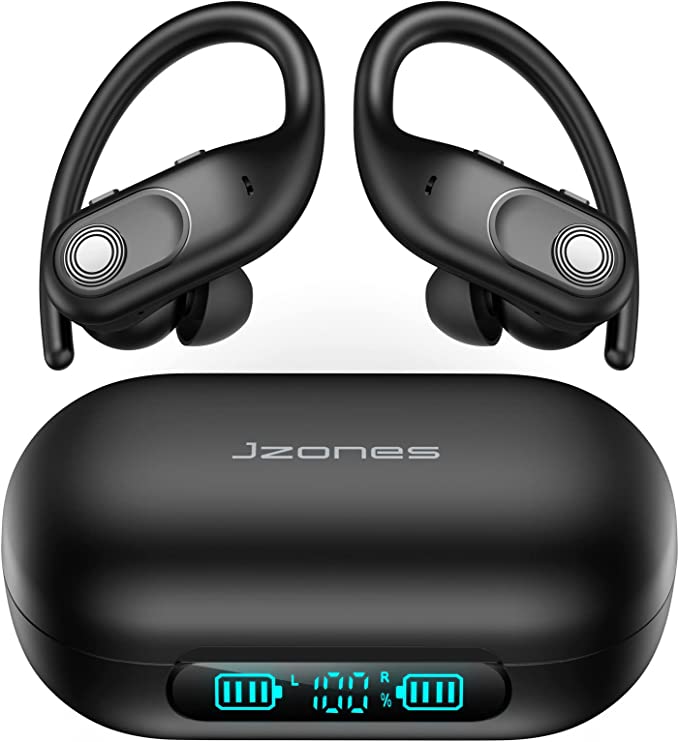There’s a unique frustration that bubbles up when technology fails us mid-stride. Picture this: you’re deep into a run, hitting your pace, the beat driving you forward… and suddenly, silence. Or worse, the jarring sensation of an earbud tumbling free, bouncing onto the pavement. The promise of wireless audio is liberation, yet the reality for many active individuals is often a tangled mess of unstable connections, insecure fits, and batteries that die far too soon. It’s this very gap between promise and reality that engineers constantly strive to bridge. Enter devices like the Ltinist BX27 Wireless Earbuds, designed specifically to weather the demands of an active life. But beyond the marketing claims, what’s the actual science and engineering that allows them to keep the rhythm going? Let’s unpack the technology inside.

The Unseen Tether: Demystifying Bluetooth 5.3
At the core of any true wireless experience lies Bluetooth, that invisible handshake connecting your phone to your ears. The Ltinist BX27 employs Bluetooth 5.3, a specific version of this ubiquitous standard. Viewing Bluetooth evolution is like watching a highway system being upgraded over time – each iteration aims to handle more traffic, more efficiently, and with fewer bottlenecks.
So, what does Bluetooth 5.3 bring to the table, especially for someone in motion? Two key advancements stand out: stability and efficiency.
Think of the airwaves around you as crowded radio frequencies. Older Bluetooth versions could sometimes struggle in busy environments, leading to those annoying stutters or complete dropouts. Bluetooth 5.3 incorporates smarter algorithms for choosing communication channels and handling potential interference. Imagine it navigating a less congested lane on that data highway, resulting in a more stable connection. For a runner or gym-goer, this translates directly to fewer jarring interruptions in their audio stream, allowing the technology to fade into the background where it belongs.
The second pillar is efficiency. Bluetooth 5.3 is designed to transmit data using less energy. It’s like upgrading your car’s engine to get better mileage. While the earbuds themselves still require power for their drivers and processors, a more efficient Bluetooth chip means the wireless communication part of the equation sips power more delicately. This contributes significantly to the overall battery life, letting you go longer between charges – a crucial factor for users who rely on their earbuds for extended workouts or throughout a busy day.
This foundational technology is complemented by user-friendly features like Auto Pairing. Once initially set up, the earbuds are designed to automatically recognize each other and connect to your last paired device almost instantly upon being removed from their case, further smoothing the path to your audio. While the typical effective range is around 10-15 meters (roughly 33-50 feet) without significant obstacles like thick walls, for most workout scenarios where your phone is on your person or nearby, Bluetooth 5.3 provides a robust and reliable link.

Engineering the Sound: Drivers, Bass, and Clear Conversations
How does music seemingly materialize from these tiny earpieces? The magic happens within the 10mm dynamic drivers housed inside each BX27 earbud. Imagine a miniature, high-fidelity loudspeaker. An electrical current, carrying the audio signal from your device, flows through a voice coil attached to a diaphragm (a thin, flexible membrane). This coil sits within a magnetic field. As the current fluctuates according to the music’s waveform, it causes the coil and the attached diaphragm to vibrate rapidly back and forth. These vibrations push and pull the air, creating pressure waves – the very sound waves that travel down your ear canal and are interpreted by your brain as music.
The “10mm” refers to the diameter of this diaphragm. Generally, a larger diaphragm has the potential to move more air, which can be advantageous for reproducing lower frequencies – the bass and sub-bass that provide the rhythmic foundation for much of contemporary music, especially genres popular for workouts. Ltinist describes the BX27 as offering “Pure Bass Sound.” This indicates that the drivers and the acoustic chamber they sit in have likely been specifically tuned to emphasize these lower frequencies. This deliberate boosting of bass can create a more impactful, energetic listening experience, often perceived as more motivating during physical activity. However, it’s crucial to remember that audio perception is subjective; what one person finds punchy and exciting, another might find overwhelming. The “best” sound signature is ultimately a matter of personal preference and the type of audio being consumed.
But earbuds aren’t just for music anymore. Taking calls on the go is a common necessity. This is where CVC 8.0 (Clear Voice Capture) technology comes into play. It’s vital to understand that CVC is not Active Noise Cancellation (ANC) for your listening experience. ANC systems use microphones to listen to ambient noise and generate anti-noise waves to cancel it out before it reaches your ears. CVC 8.0, conversely, focuses entirely on the microphone’s performance during calls.
Think of it as an intelligent filter for your voice. Microphones built into the earbuds capture your voice, but they also pick up surrounding noise – wind, traffic, gym clatter, other people talking. CVC 8.0 employs sophisticated digital signal processing algorithms designed to analyze this incoming audio stream. It attempts to differentiate the distinct patterns of human speech (your voice) from the more random or consistent patterns of background noise. Once identified, the algorithm actively suppresses or reduces the level of that unwanted ambient sound within the signal being sent to the person you’re calling. The result? Your voice should sound clearer and more intelligible to them, even if you’re in a less-than-ideal acoustic environment. It’s about making you heard, not about silencing your world.

Built for Motion: Ergonomics and Resisting the Elements
One of the most significant hurdles for conventional earbuds during vigorous activity is simply staying put. The Ltinist BX27 directly addresses this challenge with its prominent earhook design. This isn’t just an aesthetic choice; it’s rooted in fundamental principles of ergonomics and physics.
Your outer ear (the pinna) provides a natural structure that the flexible earhook can leverage. By looping over the top and resting behind the ear, the hook creates an additional anchor point. This helps counteract the downward pull of gravity and, more importantly, the inertial forces generated when your head moves rapidly during activities like running or jumping. The hook effectively distributes the earbud’s weight and provides stability that in-ear-only designs often lack. The flexibility of the hook material is also key, allowing it to conform reasonably well to a variety of ear shapes and sizes, and even accommodating the arms of glasses or sunglasses without undue pressure for many users.
Beyond securing the fit, protecting the sensitive electronics inside from the rigors of exercise is paramount. The BX27 carries an IP7 waterproof rating. The “IP” stands for Ingress Protection, a standardized international system (IEC 60529) for classifying the degree of protection provided by enclosures against intrusion from foreign objects (like dust, represented by the first digit, often ‘X’ if untested) and liquids (the second digit).
An ‘IP7’ rating specifically signifies that the device is protected against the effects of temporary immersion in water. The standard test involves submerging the device in up to 1 meter (about 3.3 feet) of fresh water for up to 30 minutes without harmful ingress. How is this achieved? It typically involves careful engineering of the earbud casing with tight tolerances, rubber gaskets or seals around openings (like charging contacts or microphone ports), and potentially the use of water-repellent coatings on internal components. For the user, this translates to robust protection against heavy sweat – which is often salty and potentially corrosive – and the ability to withstand being caught in a rain shower without damage. It’s crucial to note, however, that IP7 does not mean the earbuds are designed for swimming. The dynamic pressure of moving through water, especially at depth, can exceed the static pressure tested for the IP7 rating, potentially forcing water past the seals.
Complementing the secure fit and robust build is the choice of physical button controls. While touch controls can feel sleek, they can sometimes be finicky during exercise, prone to accidental activation by sweat, rain, or adjustments. Physical buttons provide positive tactile feedback – you know when you’ve pressed it – which can be a significant advantage when you’re focused on your workout and don’t want to fumble with controls. These buttons typically manage essential functions like play/pause, volume adjustment, track skipping, and handling calls.

The Power Narrative: Fueling Hours of Audio
Few things dampen the workout spirit faster than a low-battery warning. The Ltinist BX27 aims to minimize “battery anxiety” through a combination of efficient components and substantial capacity. Inside the earbuds and the case reside Lithium Polymer (Li-Po) batteries, a common choice for modern portable electronics due to their relatively high energy density (storing a good amount of energy in a small, light package) and ability to be formed into various shapes.
The headline figure is often the total playtime, stated here as up to 60 hours. It’s important to understand this isn’t from a single charge of the earbuds alone. Rather, the earbuds themselves are rated for up to 10 hours of listening on one full charge (actual time will vary significantly based on volume level and audio content). The charging case acts as a portable power bank, holding a 650mAh capacity. This case can then fully recharge the earbuds multiple times (roughly 5 additional charges, based on typical earbud battery capacities) when they’re docked inside. This system approach is what yields the impressive multi-day or even multi-week endurance for many users before the case itself needs recharging.
Keeping track of this energy reserve is made intuitive by the Dual LED Digital Display integrated into the charging case. This isn’t just a gimmick; it’s a highly practical user interface element. One part of the display typically shows the remaining charge percentage of the case itself (e.g., “75%”). The other part often uses status bars or individual indicators to show the charging progress of each earbud when they are placed inside. This allows you to see at a glance whether the case needs charging soon, or if the earbuds are fully topped up and ready for your next session. It transforms power management from guesswork into a proactive, informed process.
When the case eventually needs replenishing, it utilizes a USB-C charging port. This is the modern standard, offering the convenience of a reversible connector (no more fumbling to plug it in the right way) and potentially supporting faster charging speeds compared to older micro-USB ports, depending on the charger used.

Seamless Integration: Fit, Flexibility, and Compatibility
The final pieces of the user experience puzzle involve ensuring the technology integrates smoothly into your life. While the earhooks provide primary stability, the fit within the ear canal is equally crucial for both comfort and sound quality. The BX27 includes multiple sizes of silicone eartips (S/M/L). Finding the size that creates a comfortable yet effective seal is vital. A good seal not only prevents the earbuds from feeling loose but also significantly impacts the perceived audio quality, particularly the bass response (which relies on trapping air pressure) and passive noise isolation (blocking out some external sound). Experimenting with the different sizes is a necessary step for any user to optimize their experience.
The earbuds also offer usage flexibility through Single/Twin Mode. You can use both earbuds together for a full stereo experience, or use just one earbud (either left or right) independently. This is useful for situations where you need to maintain awareness of your surroundings (like running on busy streets) or for extending battery life even further by alternating usage.
Finally, broad compatibility ensures the earbuds work with the vast majority of modern devices. They readily pair with both iOS (iPhone, iPad) and Android smartphones and tablets, as well as Windows laptops, MacBooks, and other devices equipped with standard Bluetooth capabilities, making them a versatile audio solution across your digital ecosystem.

Conclusion: Where Practical Engineering Meets Everyday Endurance
The Ltinist BX27 wireless earbuds serve as a compelling case study in how specific engineering choices and established technologies can be combined to create a product tailored for a demanding use case. They don’t necessarily break new ground with revolutionary tech, but they intelligently leverage the strengths of current standards like Bluetooth 5.3 for reliable connectivity and power efficiency. The sound profile, driven by 10mm dynamic drivers and tuned for impactful bass, caters well to the motivating needs of exercise, while CVC 8.0 ensures practical call clarity.
Perhaps most significantly, the design directly confronts the physical challenges of activity through secure ergonomic earhooks and robust IP7 water resistance. This physical integrity is matched by impressive power endurance, delivered via the earbud-and-case system and made transparent by the thoughtful dual LED display. While lacking the premium features of high-end models, the Ltinist BX27 demonstrates a focused approach: delivering the core requirements of stability, durability, longevity, and usability that active individuals prioritize. They represent a pragmatic application of technology, designed not just to play music, but to reliably accompany you through sweat, rain, and miles of motion, proving that thoughtful engineering can indeed help keep the rhythm uninterrupted.




